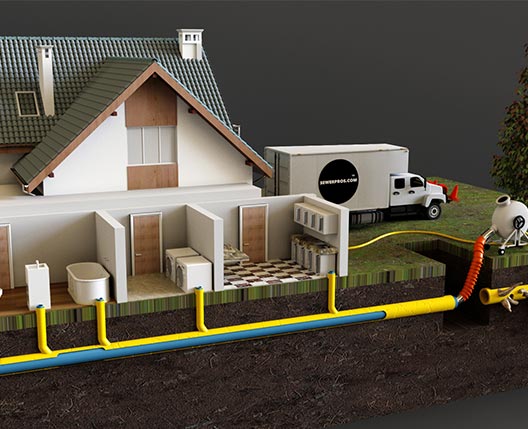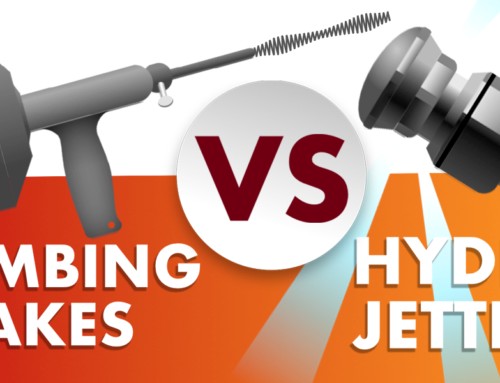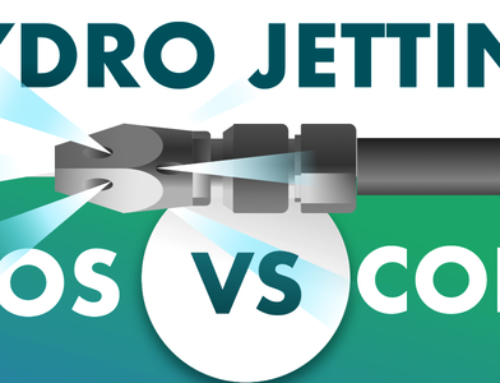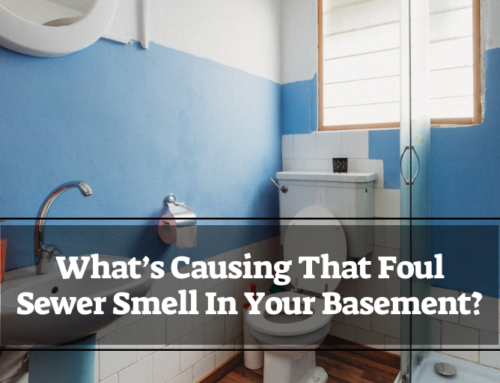In most cases, the property owner, not the city is responsible for repairing the sewer lines running from the house to the public main in the street.
This is often the case even when the damage to this pipe – referred to as the sewer lateral – is outside your property line.
What are sewer laterals?
Sewer Laterals are underground and connect your home to the main sewer line in the street. Their job is to carry wastewater out of your house and they’re usually the responsibility of the homeowner. The public sewer main, on the other hand, is the responsibility of the city or municipality.
Let’s take a look at the difference between the upper and lower laterals…
Upper laterals
The upper lateral is the section that runs from your home to your property line. Your property line usually stops at the curb or sidewalk.
Lower laterals
The lower lateral is the section that goes from your property line to the public main sewer line. Even though this section of the lateral isn’t technically on your property, you – not the city – could be responsible for repairing any damage to it.
Usually, the homeowner is responsible for the cost of repairs to lateral sewer lines, not the city.
We can’t say for sure because it varies from location to location. However, we can say that in most cases repairs to the lower lateral sewer lines will be the homeowner’s responsibility, not the city’s. For a definitive answer, contact your city or municipal sewer department.
Also, check your homeowner’s insurance to find out if it covers the cost of repairing damaged sewer lines. It often doesn’t, unless it’s on a rider.
Always get a CCTV sewer line inspection before you buy a house.
Before you sign on the dotted line for that new house make sure you call a sewer repair and replacement contractor to come out and perform a CCTV video inspection. Problems with lower laterals often mean digging up a public street and that can get expensive. You don’t want to be stuck footing the bill.
The causes of sewer backups
Aging sewer infrastructure – Our sewer system isn’t exactly a spring chicken and new homes are added to it all the time. If it has trouble keeping up with demand there will be backups and overflows.
Tree roots – Tree roots are constantly looking for moisture and if it’s there, they will find it. Clay pipes are especially susceptible to damage caused by tree roots.
City sanitary main blockage – A blockage somewhere in the sanitary main can cause sewage to enter your home via floor drains. If the leak is small, contact a sewer line repair contractor. If the sewage is rushing into your home, contact the city or municipality immediately. This kind of problem is their responsibility.
One pipe handling both storm water and sewage – These are called combined sewers. They work fine until they’re faced with an increased amount of stormwater. When this happens, the heavy load on the individual branches can cause sewage to back up into basements and then spill out into rivers and streams.
How to prevent backups in your sewer lines
Don’t wash grease down the drain – It will solidify inside your pipes and eventually start to build up and clog. Place used cooking oil in a container, not down the drain.
Only flush toilet paper – Even products that say they’re flushable, shouldn’t be flushed down the toilet.
Keep your sewer lines root-free – If you have older trees with deep roots that reach down to your pipes, you’ll need to periodically contact a sewer repair contractor to get rid of them.
Line or replace your old pipe – If you’re having root problems, either structural pipe lining or replacing your sewer line with HDPE pipe will prevent tree roots from getting inside.
Use a sewer backflow valve – This will prevent public sewer wastewater from entering your home due to heavy rainfall, blockages, or simply insufficient capacity caused by increased construction.
Trenchless repair methods for sewer lines
Trenchless repair is a minimally-invasive, cost-effective technique for repairing damaged sewer lines. What used to take days and involve extensive digging now only takes hours with just a couple of small access holes.
Structural pipe lining – This trenchless repair method is also called cured-in-place-pipe lining or just CIPP for short. It involves taking a special, epoxy-soaked felt liner and using it to create a new pipe within your old one.
An inflatable balloon is placed inside the liner and then the liner is inserted into the damaged pipe. Once the liner is in place the balloon is inflated so that the liner pushes up against the walls of the pipe. After it has cured for a few hours the balloon is removed and your pipe is as good as new.
Pipe bursting – Sometimes a pipe is damaged to the point where structural pipe lining isn’t possible. For example, when a pipe is partially collapsed. In these cases, the damaged pipe is replaced via a trenchless technique called pipe bursting.
Two 4ft by 4ft pits are dug, one at each end of the section of pipe being replaced. They are called the insertion pit and the pulling pit.
A cable is inserted into the pulling pit until it pops out the insertion pit. The new HDPE replacement pipe section along with a bursting head is attached to the cable and pulled back through the damaged pipe using a winch. As it moves, it breaks up the old pipe and replaces it with the new one.
Spray lining or brush coating – Spray lining involves spraying a polymer resin directly onto the inside of your damaged pipe to seal small cracks and holes.
Sewer Pros is a licensed and insured sewer repair and replacement contractor serving customers in Los Angeles and Orange County. We’re trenchless specialists and that means we can fix your sewer lines with only minimal digging. Give us a call today at (800) 481-3707!








Leave A Comment